White Winter:
Racism and Winter Sports
H. Bradford
1.28.17

This past fall, the Twin Ports Women’s Right Coalition began doing small events called “Feminist Frolics.” These events were meant to educate our participants about feminism while enjoying the outdoors. The very first frolic was entitled “Patriarchy in the Parks.” This talk explored how patriarchy shapes women’s relationship to nature and participation in outdoor recreation. The original talk discussed how history, gender roles, safety, and leisure influenced how women participated in nature. Since that talk, I wanted to connect how racism, classism, ableism, and other “isms” shape how individuals participate in the outdoors. As such, this talk puts a special focus on race and recreation. In particular, it explores racism and winter recreation. In my own experiences, when I spend time outdoors in the winter, I don’t often see racial minorities participating in skiing, snowshoeing, and hiking. This talk hopes to shed some light on why this is.
The Myth of Geography:
 When one considers the racial composition of winter recreational activities, the whiteness of these activities seems almost a given. In our racist imaginations, it seems natural that white people would participate in winter activities. Afterall, Europeans live in the northern hemisphere, where there is snow and cold. Thus, one might argue that geography plays a role in why winter sports tend to be more popular among white people. But, arguments about geography ignore larger issues of racism and classism. It is true that many parts of the earth do not receive snow and that these warmer regions are inhabited by darker skinned ethnic groups. However, geography does not entirely account for participation. For instance, some parts of Africa actually have ski areas. Algeria has two ski resorts and Morocco has three. Morocco has participated in six Winter Olympics, but has never won a medal. Algeria has competed in the Winter Olympics three times, but again, has never won a medal. South Africa has one ski resort, which operates three months out of the year. Lesotho also has a ski resort, which is open during the winter months and is located about 4.5 hours away from Johannesburg and Pretoria in South Africa. Despite having one ski area, Lesotho has never participated in the Winter Olympics and South Africa has never participated in ski events. In 2014, Sive Spielman, a black South African teenage skier was denied entry into the Sochi Olympics. He qualified to compete in slalom skiing, but the South African Sports Confederation and Olympic Committee disqualified him on the grounds that they did not think he was good enough. Considering he came from a poor area of South Africa, was black, and learned to ski through a ski club at his public school, his participation would have been remarkable (South Africa withdraws only athlete, 2014). Even more remarkable considering that blacks would have been barred from ski clubs and the single ski area until apartheid ended in 1994. Because under apartheid black athletes could not compete alongside white athletes, South Africa was barred from competing in the Olympics between 1962 and 1992 (they were allowed to return to the Olympics before apartheid had ended). Thus, four South African figure skaters competed in the 1960 Winter Olympics in Squaw Valley and the country did not compete in a Winter Olympics again until 1994.
When one considers the racial composition of winter recreational activities, the whiteness of these activities seems almost a given. In our racist imaginations, it seems natural that white people would participate in winter activities. Afterall, Europeans live in the northern hemisphere, where there is snow and cold. Thus, one might argue that geography plays a role in why winter sports tend to be more popular among white people. But, arguments about geography ignore larger issues of racism and classism. It is true that many parts of the earth do not receive snow and that these warmer regions are inhabited by darker skinned ethnic groups. However, geography does not entirely account for participation. For instance, some parts of Africa actually have ski areas. Algeria has two ski resorts and Morocco has three. Morocco has participated in six Winter Olympics, but has never won a medal. Algeria has competed in the Winter Olympics three times, but again, has never won a medal. South Africa has one ski resort, which operates three months out of the year. Lesotho also has a ski resort, which is open during the winter months and is located about 4.5 hours away from Johannesburg and Pretoria in South Africa. Despite having one ski area, Lesotho has never participated in the Winter Olympics and South Africa has never participated in ski events. In 2014, Sive Spielman, a black South African teenage skier was denied entry into the Sochi Olympics. He qualified to compete in slalom skiing, but the South African Sports Confederation and Olympic Committee disqualified him on the grounds that they did not think he was good enough. Considering he came from a poor area of South Africa, was black, and learned to ski through a ski club at his public school, his participation would have been remarkable (South Africa withdraws only athlete, 2014). Even more remarkable considering that blacks would have been barred from ski clubs and the single ski area until apartheid ended in 1994. Because under apartheid black athletes could not compete alongside white athletes, South Africa was barred from competing in the Olympics between 1962 and 1992 (they were allowed to return to the Olympics before apartheid had ended). Thus, four South African figure skaters competed in the 1960 Winter Olympics in Squaw Valley and the country did not compete in a Winter Olympics again until 1994.
In contrast to South Africa, Zimbabwe has no ski areas, but had a skier compete in the 2014 Sochi Olympics. Their skier, Luke Steyn, was white. Unlike Spielman, he was quite privileged, as his family moved to Switzerland when he was two years old and he attended college in Colorado. Furthermore, he was provided financial support by the Zimbabwean government (Blond, 2014). It is odd to think that Zimbabwe’s athlete was a white skier who left the country around 1995. Although he was celebrated in the media, the celebration was oddly colorblind. While many Americans adopt colorblindness as a way to avoid the sticky issue of racism, it actually perpetuates racism by skirting around issues of oppression and invalidating the continued racism in society. While I am not sure about Luke Steyn’s history, his race in contrast to his country of origin seems like an elephant in the room. His family would have been among the 120,000 whites living in Zimbabwe in the mid 1990s and likely left, like many did, because the political situation was not favorable for white people. That is, his family probably left because of land reforms which sought to turn white landholdings over to the largely black population. This was done to rectify a history of colonization, wherein white farmers were offered large tracts of land in exchange for the conquest of the country in the late 1800s. It was also done to dismantle the economic foundation of apartheid in that country. While I don’t know his family’s history, judging by his Dutch surname and his family’s ability to move to Switzerland, I can only assume that they were privileged if not landowners. The stories of Steyn and Spielman make for an interesting juxtaposition, as it shows how a white man can still succeed in a black country whereas a black man struggled for recognition even though he was part of the majority population in South Africa. One was privileged by race and class, the other disadvantaged.
All Olympic athletes are to some degree privileged, but in Africa, and when it comes to winter sports, this is more pronounced. For instance, in 2014, Togo sent its first athlete in the winter olympics in Mathilde Petitjean Amivi, a cross country skier who grew up in France but has a Togolese mother. In the 1984 Winter Games in Sarajevo, Lamine Gueye was the first black African to compete in the Olympics. But like Amivi and Steyn, he grew up outside of Africa. He went to live in Switzerland after the death of his grandfather, also named Lamine Gueye, the head of Senegalese Party of Socialist Action. Gueye has been an advocate for changing the rules of the Winter Olympics to allow more countries to compete. In fact, 96 nations have never participated in the Winter Olympics.
While tropical climate is certainly an impediment to participation in winter sports, there are many countries which have snowy areas which have not participated in the Olympics to the same degree as European countries. For instance, India has eleven ski areas and Pakistan has nine. Iran has almost twenty ski areas. Kazakhstan has four ski areas, Kyrgyzstan has three, and Lebanon has six. Ski areas indicate that the countries have elevations high enough for snow, which lends itself to skiing, along with snowboarding and sledding sports. Iran has participated in the Winter Olympics ten times, but has never won a medal. Kyrgyzstan has never participated in the winter olympics and Kazakhstan has six times. Kyrgyzstan is 94% mountains and has 158 mountain ranges. The Soviet Olympic skiers trained in Kyrgyzstan Karakol Mountain Ski Base (Krichko, 2016). Pakistan has participated in two winter Olympics and Nepal has twice. Chile, which has eight ski resorts, has participated in sixteen Olympics, but has never won a medal. Argentina has ten ski resorts, has participated in eighteen Olympics, and has never won a medal.
The trend is not so much that a country has to have snow to earn medals, as there are plenty of countries with snow, mountains, and wintry conditions which have not won medals. Instead, it seems that the countries with the highest medal counts are European and high income countries. The top ten countries for medals are Norway, United States, Germany, Soviet Union, Canada, Austria, Sweden, Switzerland, Russia, Finland. China, South Korea, and Japan each make the top twenty. These countries have more money to devote to developing sport programs and more citizens with income required to compete at a higher level. Thus, high income countries tend to be more competitive in the Olympics and high income individuals have more opportunities to participate and compete. This explains why diverse countries like the United States do not have more athletes of color in winter sports. Athletes of color have excelled in baseball, basketball, soccer, running, and many other sports. African Americans have long participated in the Summer Olympics. For instance, George Paoge competed in the 1904 summer Olympics and won two bronze medals in the 200m and 400 m hurdles. In contrast, the first African American to compete in the Winter Olympics was almost 80 years later in the 1980 Lake Placid games when Willie Davenport and Jeff Gadley competed as part of a four person bobsled team. The first African American woman to win a medal was in 1988 when Debi Thomas won a medal in figure skating at the Calgary games(Winter Olympics: Why Team USA is Nearly as White as Snow, 2010).
Rather than geography, the reason why few African Americans participate in winter recreation is because winter sports require more money for equipment, training, and coaching. Facilities to practice winter sports are often far from urban centers where African Americans might live (Winter Olympics: Why Team USA is Nearly as White as Snow, 2010). While I could not find any recent statistics, as of 2003, 2% of skiers in the United States were African American, 3% were Latino, 4% were Asian, and 1% were Native American. Among the membership of the National Brotherhood of Ski Clubs, an African American ski organization, 74% of the members are college graduates and 60% live in households with incomes of $50,000 to $100,000 a year (Rudd, 2003). Thus at an international level, but also at the level of individual local participation, access to resources shapes these sports. This is a barrier to participation among racial minorities. So, even in places with wintry conditions, there is still the barrier of cost of participation. On the low end, a beginner snowboarder would expect to pay $500-$1000 for a board, bindings, and boots. Adult skis can range from $200 to $1200. A winter season ski pass for Spirit Mountain costs over $400. Since 27% of African Americans live in poverty, compared to 11% of the general population, these kinds of expensive outdoor activities are beyond the reach of many in their community.
The Role of History:
Another reason why winter sports are white is because of the history of these sports. After all, when an individual imagines winter sports, they might imagine their white ancestors participating in some form of skiing, hockey, or skating. However, this version of history ignores that some cultures may have their own winter sports. For instance, Pakistan hosts a Baltistan Winter Sports and Culture Festival wherein participants play Ka Polo and ice football. Pakistan actually has the highest concentration of glaciers outside of the poles (“Traditional Winter Sports festival and ice sporting in GB,” 2016). Likewise, every two years, various circumpolar regions compete in the Arctic Games. Participants from Northern Canada, Alaska, Greenland, Sami areas of northern Europe, and Northern Russia compete in snowshoeing, snowboarding, volleyball, futsal, skiing, and traditional Dene games like finger pulling, pole push, and stick pull. Additionally, while there is evidence that skiing originated in Finno-Scandinavia with the discovery of rock drawings in Norway and a 4,500 ski in Sweden, Iran also has a long history of skiing. In 2000 BC ancient people in Iran produced skis made of hides and boards (History of skiing, 2005). Cree women would play a marble came, wherein marbles carved from buffalo horns were slid towards holes made in ice (Christensen, 2008). Snowshoeing originated in Central Asia 6,000 years ago, then migrated across the Bering strait to the Americas. Anishinabe, Cree, and Inuit invented sledding. The word toboggan comes from the Algonquian word odabaggan. Sled dogging was an indigenous invention and the Jean Beargrease sled dog race was named after an Ojibwe postal worker who delivered mail from Two Harbors to Grand Marais in often treacherous conditions. The Iroquois also invented a sport called Snow Snakes, or snow darts. In this game, the players must underhand throw a smooth stick along the snow to see whose stick rolls the furthest (“Winter workout: Enjoy traditional native snow sports,” 2011). Thus, many cultures have robust histories of winter games and sports. However, these winter games were either lost and diminished by colonization, appropriated by colonizers, or simply not promoted as mainstream winter activities.
Colonialism continues to play a role in winter sports. The Ktuanaxa tribe of Canada has been fighting the construction of a ski resort for 25 years. The tribe has argued that the site is sacred to them as it is a place called Qar’muk, where a grizzly bear spirit resides. The Canadian Supreme court is reviewing whether or not the resort will impinge on their religious rights, as the tribe has argued that the resort will scare away the spirit and render their rituals meaningless (“Skiers v the religious rights of Canada’s indigenous peoples,” 2016). Even Spirit Mountain in Duluth, was one of seven sacred sites to Anishinabe people. It was a place for burials and worship and development of the ski area and subsequent golf course and hotel. Spirit Mountain was a meeting place for Anishinabe and had historical significance as place on their western migration route (Podezwa and Larson). Environment and culture did not stop a ski resort from being built in Arizona. In 2012, the Navajos and twelve other tribes appealed a judge’s decision to allow Arizona Snowbowl to use wastewater to make snow for their ski resort. The Navajo argued that the land was sacred and that the use of wastewater to make snow was a threat to human health. Navajo people collect medicinal plants from the mountain, which have been contaminated by the wastewater. Using only natural snowfall, the resort would have a nine day ski season. However, the artificial snow extends the season to 121 days. Once again, geography is not necessarily an impediment to winter sports if there is money involved. As of 2015, the issue was not resolved (Finnerty, 2012). While it would be unheard of to construct a skating rink in a cemetery or cathedral, the religious and cultural practices of Native Americans have been ignored, suppressed, and mocked. It is little wonder why they would not be interested in participating in high priced, environmentally destructive leisure activities on sacred land.
While the lack of Native American participation in some winter activities could be attributed to a different relationship to land, it doesn’t account for why Native Americans do not participate in snowshoeing. Rudimentary snowshoes originated in Central Asia 6000 years ago and moved across the Bering Strait to the Americas with the migration of aboriginal peoples. Differing snow conditions resulted in various designs, with longer snowshoes developed by Cree people, who faced warmer, wetter snow conditions and shorter snowshoes were developed by Iroquois people (Carr. n.d.). Snowshoes were developed as a matter of survival, as they allowed indigenous people to travel and hunt during the winter. The construction of snowshoes themselves was a traditional craft undertaken by both men and women (Boney, 2012). As with many things, European colonizers adopted snowshoeing for their own uses, eventually converting them to something used for recreation. Snowshoeing first became a sport in Canada, then the U.S. By the 1970s, they began to grow in mainstream popularity. During the 1980s, aluminum snowshoes grew in popularity (King, 2004). In the advent of manufactured snowshoes, the craft of snowshoe making has been declining. This has also rendered snowshoeing a profitable industry to companies who make snowshoes. Companies such as Red Feather, Tubbs, Atlas, and Yukon Charlie are not owned by Native Americans nor do they specifically seek to benefit them. While Tubbs boasts about inventing the first snowshoe for women in 1998 and donating money to Susan G. Komen for the Cure, there is no mention of how their snowshoes might benefit anyone other than white women. Likewise, Redfeather snowshoes based in La Crosse, Wisconsin mentions on its website that it hires people with disabilities, but does not mention anything about helping Native Americans, even if its name and company logo invoke Native American imagery. It is no wonder that a simple google image search of snowshoeing features hundreds of pictures of white people, but no images of Native Americans partaking in the activity. It has become a thoroughly white pastime. It is an example of cultural appropriation that is so normal and commonplace that the historical and cultural meaning of snowshoeing is almost entirely invisible. 
The Role of Racism:
The lack of participation in winter sports may seem trivial, but in many ways it is a microcosm of the larger racial issues in society. For instance, in 1997, Mabel Fairbanks was the first African American woman inducted into the U.S. figure skating hall of fame. She was 82 at the time of her induction and was never allowed to skate competitively. Because of segregation, she was not allowed to practice at skating rinks. However, she went on to do her own skating shows for black audiences and was a coach to Debi Thomas and Tai Babilonia. Thomas cited income as a barrier to competitive skating, as she was raised by a single mother and the cost of training can be $25,000 on the low end (Brown). In U.S. society, class intersects powerfully with race. African American children are four times as likely to live in poverty in the United States than white children (Patten and Krogstad, 2015). In 1967, the median income of African Americans compared to white Americans was 55%. In 2013, this had increased to 59%, but a 4% increase over four and a half decades is hardly impressive. Looking at wealth, or such things as retirement savings and house ownership, African Americans owned 7% of the wealth of white people in 2011. This was actually down from 9% in 1984 (Vara, 2013). The segregation that Mabel Fairbanks faced continues today in the form of economic segregation that relegates African Americans to poor communities and low paying service industry jobs. It also persists through the criminal justice system. After all, an African American male born in 2001 has a 32% chance of going to jail, compared to a 6% chance for a white male born in the same year (Quigley, 2011).
Aside from the racist structures that may prevent individuals to partake in winter recreation to begin with, there is racism within these sports. Surya Bonaly, a black French figure skater from the 1990s, was the only figure skater in the history to do a backflip and land on one blade. This astonishing feat actually disqualified her in the 1998 Olympics. She did the flip to flip off the judges, who she felt scored her lower because of her race. At the time, the rule was that a jump must land on one blade, which was meant to deter back flips as this would be a two bladed jump. However, she landed on one to test the judges, who disqualified her anyway (Surya Bonaly is the biggest badass in Winter Olympics history, 2014). At the time, critics called her inelegant and more powerful than graceful. Surya was accused of damaging the nerves of fellow ice skater Midori Ito, which caused Ito to fall in her performance (Du, 2016). These critiques demonstrate both racism and sexism, as she did not meet the judge’s expectation of what a figure skater should look like. To them, a powerful black woman was not only threatening to the sport, but to other skaters. The nine time French National champion, five time European champion, and three time World silver medalist now resides in Minnesota, where she teaches skating lessons.

There are many examples of more blatant racism against athletes of color. Irina Rodina, who lit the torch for the Sochi Olympics, posted an image of Barack and Michelle Obama as monkeys with bananas on her Twitter (Myerberg, 2014). The Northwestern University Ski Team, consisting of 65 individuals, hosted a racially themed party in April 2012, where they dressed as South Africans, Ugandan, Ireland, Canada, Bangladeshi, and Native Americans. The students participated in a “Beer Olympics” wherein they portrayed various nations competing with each other in drinking games. The students dressed in a stereotypical and mocking fashion. This caused a controversy on campus in which the ski team offered an apology but was also portrayed as victims of aggression from students of color who were offended by their party (Svitek, 2012). Val James, the first American born black player in the NHL, experienced racism when he played for the Toronto Maple Leafs and Buffalo Sabres in the early 1980s. Bananas were thrown into the rink and a monkey doll was hung from a penalty box. He was born into a low income family in Florida and did not start skating until he was 13. Despite his accomplishment in overcoming racial and class barriers, mocking spectators would eat watermelons with his name on it. Even today, only 5% of NHL players are black (Sommerstein, 2015). These blatant acts of racism send the message that people of color are not welcome to participate in winter sports.
Another example of racism is evident in the story of the Jamaican bobsled team. Jamaica debuted its famous bobsled team in the 1988 Calgary Olympics. The story was made into a highly fictionalized movie called Cool Runnings. The national team appeared again at the Salt Lake Olympics and Sochi. In the Lillehammer Olympics, the team placed 13th and beat the US, Russia, and Italy. Bobsledding was easier to adapt to Jamaica since it entailed pushing a 600 pound sled as fast as possible, then jumping in. The Jamaican bobsled team crashed during their first Olympics, but were treated as national heroes. The team inspired other unlikely countries to form bobsled teams such as Mexico, Philippines, Trinidad and Tobago, and several U.S. territories (Atkin, 2014). Nigeria wants to field its own bobsled team in the 2018 Olympics in South Korea. The Nigerian team of former Olympian sprinters has formed to practice with a wooden sled until they can raise enough funds for an actual sled and track (Payne, 2016).
The Jamaican bobsled team could be seen as heroic, considering the challenges of becoming a winter athlete in an impoverished tropical country. Yet, the team continues to be a joke at best and racist trope at worst. For instance, two San Diego High School football coaches wore “Cool Runnings” inspired Jamaican Bobsled costumes, complete with black face in 2013 (Walsh, 2013). In 2015, a group of UW-Stout students attended a private Halloween party as the Jamaican bobsled team, again in black face. The college made a statement that they do not affiliate with those actions (Perez, 2015). In 2014, a group of Brock University college students dressed up as the Jamaican bobsled team and won a $500 costume prize. A critic of these students wrote that black costumes represent the limit of the white imagination to envision black people as anything other than rappers, gangsters, or athletes. These costumes are also a way to control how black people are understood. The film Cool Runnings itself represented Jamaicans in a stereotypical way by actors who were not even Jamaican. Blackface dehumanizes black people. The Jamaican Bobsled costumes affirm a racial hierarchy by making the athletes a stereotype or joke (Traore, 2014).
While much of this discussion has focused on African and African Americans, other racial minority groups face similar challenges. Out of 11,000 U.S. Olympic athletes, only 14 have identified as Native American. Only two of the 14 were female. One of the two was Naomi Lang. In 2002, Naomi Lang became the first Native American identified woman to compete in the Winter Olympics. She is a member of the Kuruk tribe of California but was mocked for wearing traditional regalia at the 2010 Vancouver Olympics. Skating cost her family $60,000 a year. To afford this, she slept on a mattress and wore hand me down clothes as a high schooler. Lang resisted competitions, since she felt that her culture stressed cooperation and community. Aside from differences in culture and challenges such as racism and poverty, Native Americans face the added challenge of health. 30% of Native American 4 year olds are obese, which is twice the amount of any other ethnic group (Sottile, 2011). Native Americans are also three times as likely to develop diabetes than white people. These health problems can be related back to colonization, which removed Native Americans from their land and traditional food sources and created historical trauma that continues to cause stress and health problems.
Conclusion:
The goal of feminist frolics is to enjoy the outdoors while learning. As we venture outdoors this winter, perhaps we will notice how very white the forests, trails, and hills are. Hopefully, this can be connected back to the larger racial disparities that exist in society. It is my hope that this can help us become attuned to other spaces that are largely white. For instance, one of the critiques of the recent Women’s March in Washington was the whiteness of the feminists in attendance. Many of the issues that keep racial minorities out of winter sports also prevent them from participating in politics. For instance, the media and police had an easier time imagining the protests as non-violent because it was undertaken by large crowds of white women, as opposed to Standing Rock and Black Lives Matter, which are viewed more negatively and violently by police and the media. Becoming aware of why certain groups may feel excluded or unwelcome can help us build stronger and broader movements. So, that is the larger mission of this discussion. There should be more spring times for oppressed groups than endless, white winters.
Sources:
African Athletes representing at Sochi Winter Olympic Games. (2014, February 5). Retrieved January 26, 2017, from http://afritorial.com/african-athletes-at-sochi-winter-olympic-games/
Atkin, N. (2014, February 5). The real cool Runnings. Retrieved December 21, 2016, from http://en.espn.co.uk/olympic-sports/sport/story/280229.html
http://www.snowshoemag.com/2007/01/01/from-bear-paws-to-beaver-tails-the-history-of-snowshoes-from-the-first-edition-of-snowshoe-magazine/
Blond, B. (2014) Ten things to know about Zimbabwe ski sensation Luke Steyn. Retrieved December 21, 2016 from
http://afkinsider.com/41662/10-things-know-zimbabwe-ski-sensation-luke-steyn/9/
Boney, N. (2012, June 17). Snowshoes and the Canadian First Nations. Retrieved January 27, 2017, from http://www.snowshoemag.com/2012/06/17/snowshoes-and-the-canadian-first-nations/
Brown, S. L. (2015, August 18). The rebellious, back-flipping black figure Skater who changed the sport forever. Retrieved December 16, 2016, from https://newrepublic.com/article/122561/back-flipping-black-figure-skater-who-changed-sport-forever
Carr, K. E. (n.d.). Native American Science. Retrieved January 27, 2017, from http://quatr.us/northamerica/before1500/science/#topbar
Christenson, C. (2008). Aboriginal Sports. Retrieved January 27, 2017 from
Click to access aboriginal_sports.pdf
Du, S. (2016, September 7). Surya Bonaly, figure skating’s bad-girl star, makes new life in Minnesota. Retrieved December 16, 2016, from http://www.citypages.com/news/figure-skatings-bad-girl-star-surya-bonaly-makes-new-life-in-minnesota/392501041
Finnerty, M. (2015, March 14). Compromise complicated in debate over faith, water, land. Retrieved January 26, 2017, from http://www.azcentral.com/story/travel/2015/03/13/navajo-nation-files-human-rights-protest-snowbowl-snow-making/70214892/
Harrison, A.K., (2013). Black skiing, everyday racism, and the racial spatiality of Whiteness. Journal of Sport & Social Issues, 37(4), 315-339.
History of skiing (2005). Retrieved December 18, 2016, from http://www.loveandpiste.co.uk/historyofskiing.php
King, C. R. (2004). Native Americans in sports. Armonk, NY: Sharpe Reference.
Krichko, K. (2016, January 13). Skiing Kyrgyzstan’s vast, snowy frontier | VICE sports. Retrieved December 18, 2016, from https://sports.vice.com/en_us/article/skiing-kyrgyzstans-vast-snowy-frontier
Myerberg, P. (2014, February 7). Skater who lit Olympic flame took racist shot at Obama. . Retrieved from http://www.usatoday.com/story/sports/olympics/sochi/2014/02/07/winter-games-obama-flame-irina-rodnina-racist/5289869/
Patten, E., & Krogstad, J. M. (2015, July 14). Black child poverty rate holds steady, even as other groups see declines. Retrieved January 27, 2017, from http://www.pewresearch.org/fact-tank/2015/07/14/black-child-poverty-rate-holds-steady-even-as-other-groups-see-declines/
Payne, M. (2016, December 17). Move over, Jamaica: Nigeria wants to field the next unlikely Olympics bobsled team. Washington Post. Retrieved from https://www.washingtonpost.com/news/early-lead/wp/2016/12/17/move-over-jamaica-nigeria-wants-to-be-field-the-next-unlikely-olympics-bobsled-team/?utm_term=.85c8bee75cd7
Perez, I. (2015, nov). UW-Stout students upset over blackface Halloween costume. Retrieved December 21, 2016, from http://www.fox9.com/news/44912694-story
Podezwa, Kathy and Larson, Tim n.d. Building a coalition on Spirit Mountain. Retrieved December 21, 2016 from
https://freshwaterfuture.org/services/success-stories/building-coalition-on-spirit-mountain/
Quigley, B. (n.d.). Fourteen Examples of Racism in Criminal Justice System. Retrieved January 27, 2017, from http://www.huffingtonpost.com/bill-quigley/fourteen-examples-of-raci_b_658947.html
Redd, C. K. (2003, November 09). Giving African American Skiers a Lift. Retrieved January 26, 2017, from http://archive.boston.com/travel/articles/2003/11/09/giving_african_american_skiers_a_lift/
Skiers v the religious rights of Canada’s indigenous peoples. (2016, November 26). Retrieved December 18, 2016, from The Economist, http://www.economist.com/news/americas/21710857-case-supreme-court-will-set-noteworthy-precedent-skiers-v-religious-rights
Sommerstein, D. (2015, February 26). As First black American NHL player, enforcer was defenseless against racism. Retrieved December 18, 2016, from NPR, http://www.npr.org/sections/codeswitch/2015/02/26/389284068/as-first-black-american-nhl-player-enforcer-was-defenseless-vs-racism
Sottile, C. (2014). Winning for native America. Retrieved December 18, 2016, from http://www.chiarasottile.com/winning-for-native-america/
South Africa withdraws only athlete. (2014, January 24). Retrieved January 26, 2017, from http://www.espn.com/olympics/winter/2014/alpine/story/_/id/10343352/south-africa-denies-only-olympian-sive-speelman-place-sochi
Svitek, P. (2012, April 26). Aggressive effort’ behind exposing ski team party. Retrieved December 16, 2016, from Administration, https://dailynorthwestern.com/2012/04/26/campus/campusarchived/aggressive-effort-behind-exposing-ski-team-party/
Svitek, P. (2012, April 25). Ski team apologizes for hosting controversial party. Retrieved December 16, 2016, from Campus (Archived), https://dailynorthwestern.com/2012/04/25/campus/campusarchived/ski-team-apologizes-for-hosting-controversial-party/
Surya Bonaly is the biggest bad ass in Winter Olympics history. (2014, February 6). Retrieved December 16, 2016, from http://groupthink.kinja.com/surya-bonaly-was-the-biggest-bad-ass-in-winter-olympics-1517897822
Traditional Winter Sports festival and ice sporting in GB. (2016, January 27). Retrieved December 18, 2016, from http://gbtribune.blogspot.com/2016/01/traditional-winter-sports-festival-and.html
Traore, I. (2014, November 20). Blackface, trauma and cultural racism — the silhouette. Retrieved December 21, 2016, from https://www.thesil.ca/blackface-trauma-and-cultural-racism
Vara, V. (2014, July 16). Race and Poverty, Fifty Years After the March. Retrieved January 27, 2017, from http://www.newyorker.com/business/currency/race-and-poverty-fifty-years-after-the-march
Walsh, M. (2013, October 30). Coaches’ “cool Runnings” blackface outrages civil rights groups. Retrieved December 21, 2016, from http://www.nydailynews.com/news/national/coaches-cool-runnings-blackface-outrages-civil-rights-groups-article-1.1501735
White as Snow – Racism and the Winter Olympics. (2013, January 30). Retrieved January 27, 2017, from https://www.ua-magazine.com/22252/
Winter workout: Enjoy traditional native snow sports. (2011, December 16). Retrieved December 18, 2016, from Indian Country News, https://indiancountrymedianetwork.com/news/winter-workout-enjoy-traditional-native-snow-sports/
Posted in
activism,
culture,
feminism,
history,
nature,
Politics/Ideas,
racism,
sociology and tagged
Africa and the Winter Olympics,
African American winter athletes,
cultural appropriation,
feminist,
feminist activism,
feminist frolic,
H. Bradford,
history,
Jamaican bobsled team,
Native Americans and sports,
Native Americans and the Olympics,
racism,
racism and skiing.,
racism and the winter olympics,
racism and winter sports,
snowshoeing,
twin ports women's rights coalition |
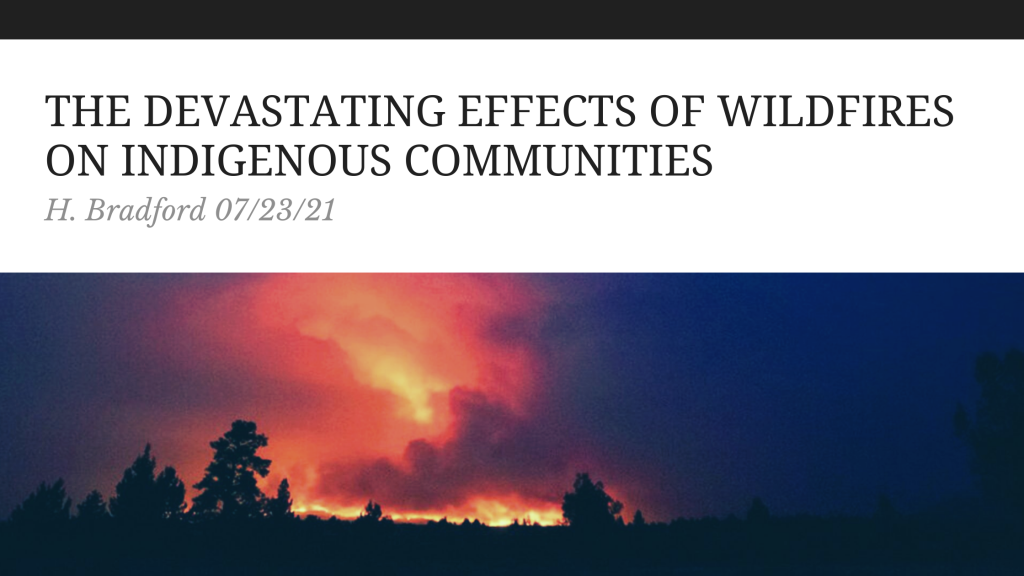

![2[1]](https://brokenwallsandnarratives.files.wordpress.com/2018/06/21.png)
 The term Wandering Jew comes from 13th Century Christian folklore. The character is a Jewish man who was said to have taunted Jesus before he was crucified. As punishment for his taunt, he was cursed to walk the Earth until the return of Christ. In some stories, his clothes and shoes never wear out and after 100 years, he returns to being a younger man. He was a perpetual traveler, unable to rest, but able to converse in all of the languages of the world. This is not based on any actual Biblical story, though it may have been inspired by the story of Caine and European paganism. Much like Big Foot or ghosts today, Europeans of the time believed that they had actually seen this character. For hundreds of year, even into the present day, this character has appeared in literature and art.
The term Wandering Jew comes from 13th Century Christian folklore. The character is a Jewish man who was said to have taunted Jesus before he was crucified. As punishment for his taunt, he was cursed to walk the Earth until the return of Christ. In some stories, his clothes and shoes never wear out and after 100 years, he returns to being a younger man. He was a perpetual traveler, unable to rest, but able to converse in all of the languages of the world. This is not based on any actual Biblical story, though it may have been inspired by the story of Caine and European paganism. Much like Big Foot or ghosts today, Europeans of the time believed that they had actually seen this character. For hundreds of year, even into the present day, this character has appeared in literature and art. 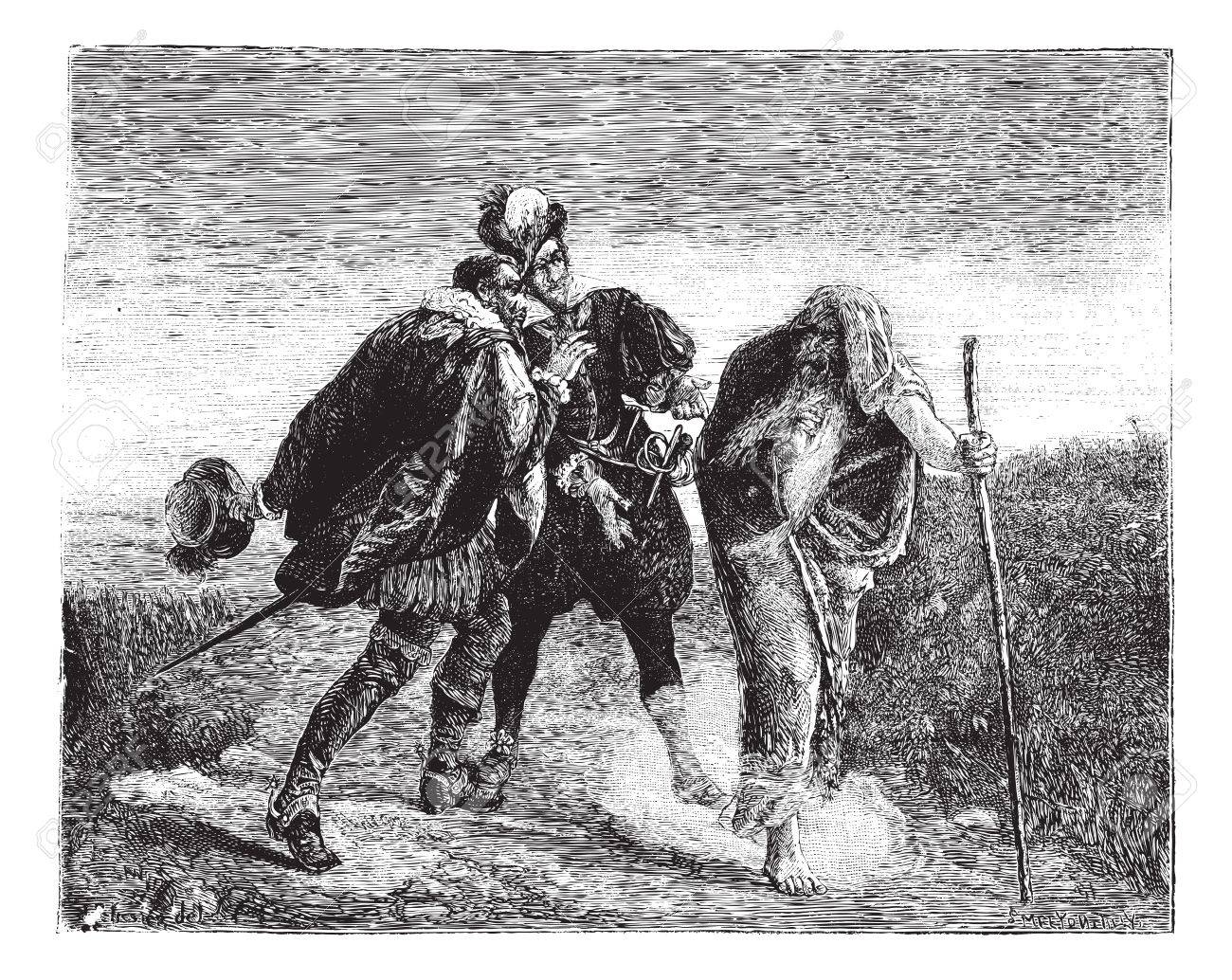

 African Americans came to the United States as slaves and were only allowed to grow a small selection of vegetables for themselves. Collards were one of them. While the vegetable is not African in origin, the methods of preparation were. West Africans use hundreds of species of leafy greens and prepare them in ways that maintain their high nutrient content. Enslaved Africans found fewer wild greens here and came to rely on collards, which were brought here by the British. (Depending upon where the slaves were taken from, they may have been familiar with leafy cabbages as in the Middle Ages, cabbages of various sorts were traded into Africa through Morocco and Mali). They are unique among cabbages in that they can continue to produce leaves over their growing season. They can be harvested for months when other vegetables quit in the cold weather. Collards helped slaves to survive due to their productivity. For this reason, poor white people also grew collards. It is a cheap, productive, healthy plant. Although white Southerners grew the plant, it was a marginal crop to European settlers and African Americans deserve credit for popularizing the use of greens and their preparation.
African Americans came to the United States as slaves and were only allowed to grow a small selection of vegetables for themselves. Collards were one of them. While the vegetable is not African in origin, the methods of preparation were. West Africans use hundreds of species of leafy greens and prepare them in ways that maintain their high nutrient content. Enslaved Africans found fewer wild greens here and came to rely on collards, which were brought here by the British. (Depending upon where the slaves were taken from, they may have been familiar with leafy cabbages as in the Middle Ages, cabbages of various sorts were traded into Africa through Morocco and Mali). They are unique among cabbages in that they can continue to produce leaves over their growing season. They can be harvested for months when other vegetables quit in the cold weather. Collards helped slaves to survive due to their productivity. For this reason, poor white people also grew collards. It is a cheap, productive, healthy plant. Although white Southerners grew the plant, it was a marginal crop to European settlers and African Americans deserve credit for popularizing the use of greens and their preparation. 
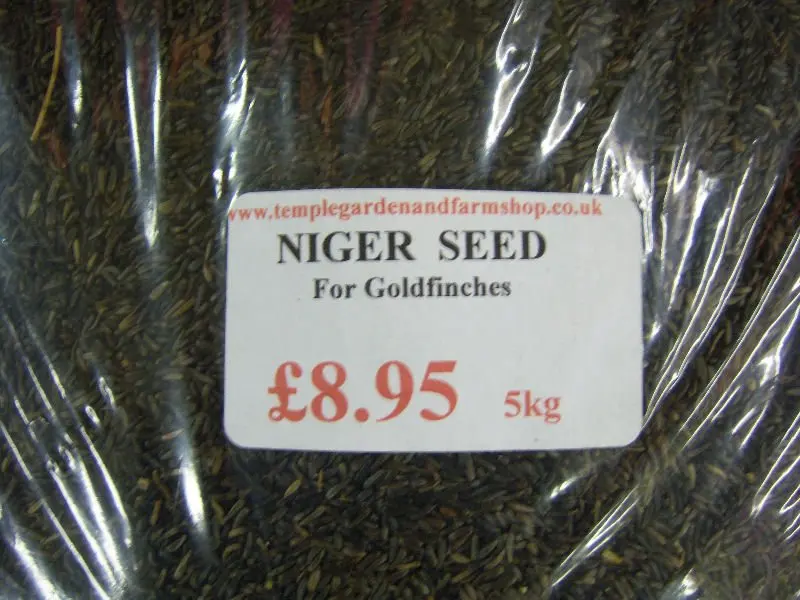 While the name might suggest that the seed came from Nigeria or Niger, nyjer seed actually comes from the Guizotia abyssinica plant which grows in the highlands of Ethiopia. I found a reference to the seed being called Nigerian thistle, which to me indicates that whomever named the seed must have had some confusion about the geography of Africa or, perhaps generically called it “niger” seed as a stand in for Africa itself. Nigeria, Niger, and the Niger River are all located in West Africa whereas Ethiopia is in East Africa. The genus Guizotia contains six species, of which five are native to Ethiopia. A distribution map of the species shows that it grows naturally in some areas of Uganda, Malawi, Ethiopia, Zimbabwe, Tanzania, Democratic Republic of Congo, and Sudan. It also grows in India, Bhutan, Bangladesh, and Nepal. The plants found in and around India are believed to have been brought there long ago by Ethiopian migrants, who also brought millet to the region. Therefore, Nyger seed really has nothing to do with the countries of its (former) namesake and represents a sort of “imagined Africa” rather than any geographical or botanical reality.
While the name might suggest that the seed came from Nigeria or Niger, nyjer seed actually comes from the Guizotia abyssinica plant which grows in the highlands of Ethiopia. I found a reference to the seed being called Nigerian thistle, which to me indicates that whomever named the seed must have had some confusion about the geography of Africa or, perhaps generically called it “niger” seed as a stand in for Africa itself. Nigeria, Niger, and the Niger River are all located in West Africa whereas Ethiopia is in East Africa. The genus Guizotia contains six species, of which five are native to Ethiopia. A distribution map of the species shows that it grows naturally in some areas of Uganda, Malawi, Ethiopia, Zimbabwe, Tanzania, Democratic Republic of Congo, and Sudan. It also grows in India, Bhutan, Bangladesh, and Nepal. The plants found in and around India are believed to have been brought there long ago by Ethiopian migrants, who also brought millet to the region. Therefore, Nyger seed really has nothing to do with the countries of its (former) namesake and represents a sort of “imagined Africa” rather than any geographical or botanical reality. 





)

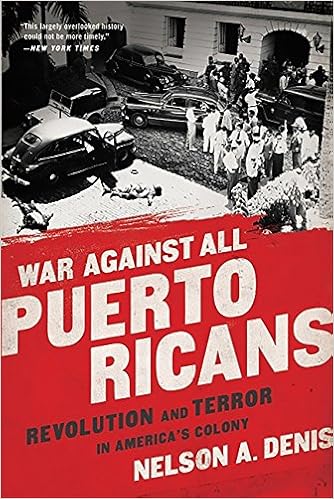
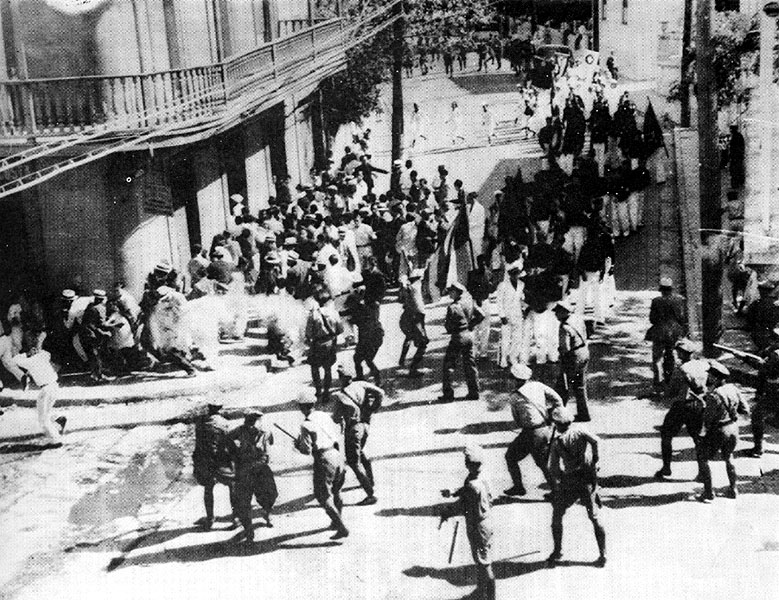


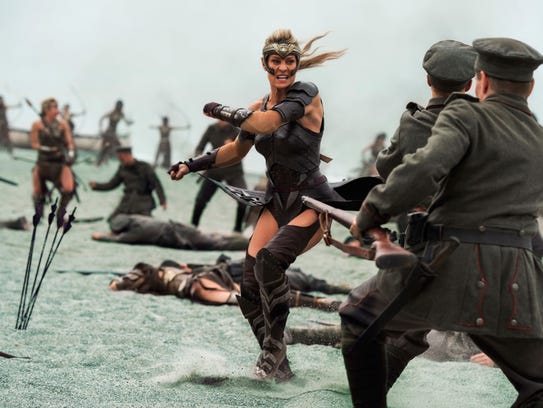












 This is a promotional photo taken by the Homeless Person’s Bill of Rights Coalition. The featured individual is an activist who is engaged in this campaign and who has spoken about her experiences (Shareeka), though many individuals had their photos taken to promote the ordinance.
This is a promotional photo taken by the Homeless Person’s Bill of Rights Coalition. The featured individual is an activist who is engaged in this campaign and who has spoken about her experiences (Shareeka), though many individuals had their photos taken to promote the ordinance.









 When one considers the racial composition of winter recreational activities, the whiteness of these activities seems almost a given. In our racist imaginations, it seems natural that white people would participate in winter activities. Afterall, Europeans live in the northern hemisphere, where there is snow and cold. Thus, one might argue that geography plays a role in why winter sports tend to be more popular among white people. But, arguments about geography ignore larger issues of racism and classism. It is true that many parts of the earth do not receive snow and that these warmer regions are inhabited by darker skinned ethnic groups. However, geography does not entirely account for participation. For instance, some parts of Africa actually have ski areas. Algeria has two ski resorts and Morocco has three. Morocco has participated in six Winter Olympics, but has never won a medal. Algeria has competed in the Winter Olympics three times, but again, has never won a medal. South Africa has one ski resort, which operates three months out of the year. Lesotho also has a ski resort, which is open during the winter months and is located about 4.5 hours away from Johannesburg and Pretoria in South Africa. Despite having one ski area, Lesotho has never participated in the Winter Olympics and South Africa has never participated in ski events. In 2014, Sive Spielman, a black South African teenage skier was denied entry into the Sochi Olympics. He qualified to compete in slalom skiing, but the South African Sports Confederation and Olympic Committee disqualified him on the grounds that they did not think he was good enough. Considering he came from a poor area of South Africa, was black, and learned to ski through a ski club at his public school, his participation would have been remarkable (South Africa withdraws only athlete, 2014). Even more remarkable considering that blacks would have been barred from ski clubs and the single ski area until apartheid ended in 1994. Because under apartheid black athletes could not compete alongside white athletes, South Africa was barred from competing in the Olympics between 1962 and 1992 (they were allowed to return to the Olympics before apartheid had ended). Thus, four South African figure skaters competed in the 1960 Winter Olympics in Squaw Valley and the country did not compete in a Winter Olympics again until 1994.
When one considers the racial composition of winter recreational activities, the whiteness of these activities seems almost a given. In our racist imaginations, it seems natural that white people would participate in winter activities. Afterall, Europeans live in the northern hemisphere, where there is snow and cold. Thus, one might argue that geography plays a role in why winter sports tend to be more popular among white people. But, arguments about geography ignore larger issues of racism and classism. It is true that many parts of the earth do not receive snow and that these warmer regions are inhabited by darker skinned ethnic groups. However, geography does not entirely account for participation. For instance, some parts of Africa actually have ski areas. Algeria has two ski resorts and Morocco has three. Morocco has participated in six Winter Olympics, but has never won a medal. Algeria has competed in the Winter Olympics three times, but again, has never won a medal. South Africa has one ski resort, which operates three months out of the year. Lesotho also has a ski resort, which is open during the winter months and is located about 4.5 hours away from Johannesburg and Pretoria in South Africa. Despite having one ski area, Lesotho has never participated in the Winter Olympics and South Africa has never participated in ski events. In 2014, Sive Spielman, a black South African teenage skier was denied entry into the Sochi Olympics. He qualified to compete in slalom skiing, but the South African Sports Confederation and Olympic Committee disqualified him on the grounds that they did not think he was good enough. Considering he came from a poor area of South Africa, was black, and learned to ski through a ski club at his public school, his participation would have been remarkable (South Africa withdraws only athlete, 2014). Even more remarkable considering that blacks would have been barred from ski clubs and the single ski area until apartheid ended in 1994. Because under apartheid black athletes could not compete alongside white athletes, South Africa was barred from competing in the Olympics between 1962 and 1992 (they were allowed to return to the Olympics before apartheid had ended). Thus, four South African figure skaters competed in the 1960 Winter Olympics in Squaw Valley and the country did not compete in a Winter Olympics again until 1994.
